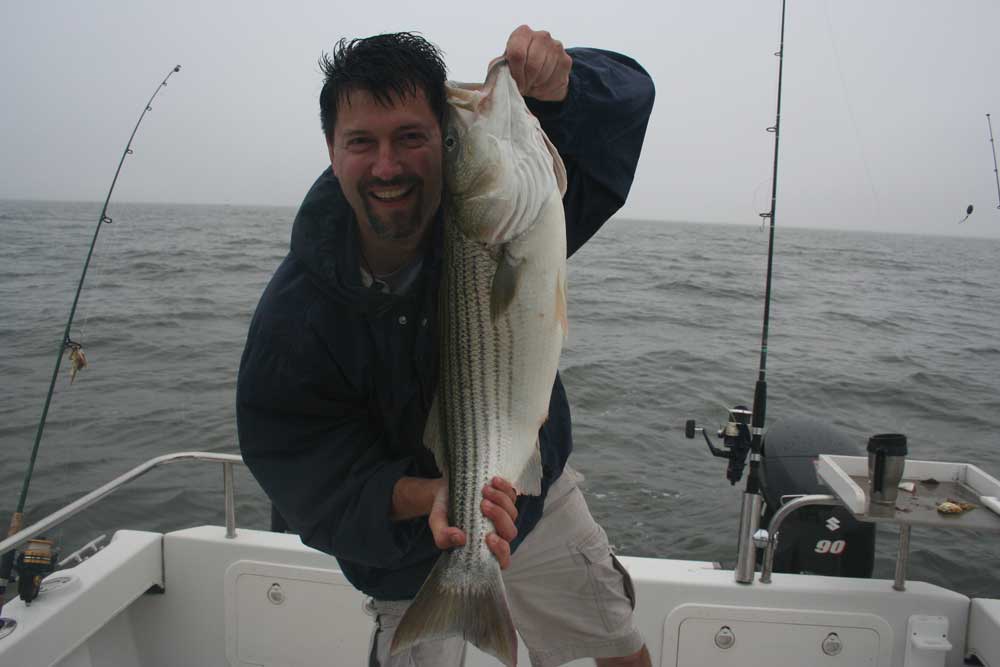In view of the recent past, I ask our local governments in Delaware, Maryland, and Virginia to consider that they:
- Declare the months of March through December henceforth be known as “Deluge Season.”
- Declare the months of January and February henceforth be known as “Snow Melt-Off Flood Season.”
- Declare that every gutter, swale, and ditch be known as a “Deluge or Snow Melt-Off Flood Season Chesapeake Bay Tributary.”

I am only half kidding.
Here’s the thing – as I constantly remind myself and others, I’m not a scientist, and I’m not qualified to make firm judgments about the status of our fisheries nor the overall health of the Mid-Atlantic waters. (Unfortunately, neither are most of the people who end up making the rules and regulations that are alleged to protect those fisheries and waters). However, I have lived, worked, fished, and played on these waters since the day I was born, and if there’s any one constant I have noticed it’s that in years of heavy rainfall the health of the Chesapeake generally takes a hit. In drought years, its health usually improves.
Consider the assault of tropical storm Agnes, blamed for the Bay’s horrific state in the early to mid-70s. That was prior to the Bay’s health being documented by the University of Maryland Center for Environmental Science “report card” and later by Chesapeake Bay Foundation report cards, but old timers remember the impact well. Then consider the season of 2003, when the Bay got its worst report card grade ever with a percentage-score of 36. It followed what the Baltimore Sun called “the worst blizzard in memory, the rainiest summer in 25 years, and the wettest overall year since 1871.”
Six dry years later the state of the Bay bounced back enough to warrant a score of 54, its highest since ’02. But then in 2011 there was this little thing called tropical storm Lee. Not coincidentally, the Bay’s score plunged back down to 40. It’s been slowly creeping back up since, but we all know what’s been happening recently so far as precipitation goes. Basements have flooded, yards have morphed into marshland for weeks at a time, and we all feel like we moved to Bangladesh during the height of monsoon season. The latest grade for the Bay? It stands at a dismal, drowning, choking, desperately-treading-rainwater score of 33.
We can not, of course, control the weather. We can’t make it rain less. However, we might re-learn a lesson from this apparent pattern: all that dang rain flows right into the Chesapeake. And as a result, every spilled can of gas, leaked drop of oil, and dropped candy wrapper will eventually make its way into the very same waters we cast in.
While many Bay-lovers already recognize that everything spilled on land eventually washes into the watershed, it’s no longer in the forefront of our minds in the same way it was decades ago. Remember when it seemed like each and every drain you walked by had “CHESAPEAKE BAY DRAINAGE” spray-painted on it in big, bold letters? You couldn’t walk one block in Baltimore city nor strut down a street in Sykesville without seeing it.
True, words painted on a storm drain do nothing about larger issues like overflowing sewerage pumping stations, nor the tons of topsoil pouring into the Bay from states to our north. But that’s beside the point – the fact is that it’s helpful to get everyone into the same frame of mind. It’s all about making sure that everyone from kids to curmudgeons are constantly reminded of how runoff affects the Bay. And it’s about building a consciousness of how runoff affects our Bay into our very culture. That consciousness existed when I was a kid, and I was proud of it back then. But years of pounding rains have done another kind of damage, in that they’ve also washed these words from the concrete they were painted upon. Wouldn’t it be great to see those constant reminders once again, and have that point of pride once more?
Volunteers, fishing clubs, teachers, and community organizers: Blue Water Baltimore has an active storm drain stenciling program with several workshops held every year. The next is scheduled for March 14, 6:00 p.m. to 7:00 p.m. Stencil kits are also available via the Chesapeake Bay Foundation, and the Maryland DNR.